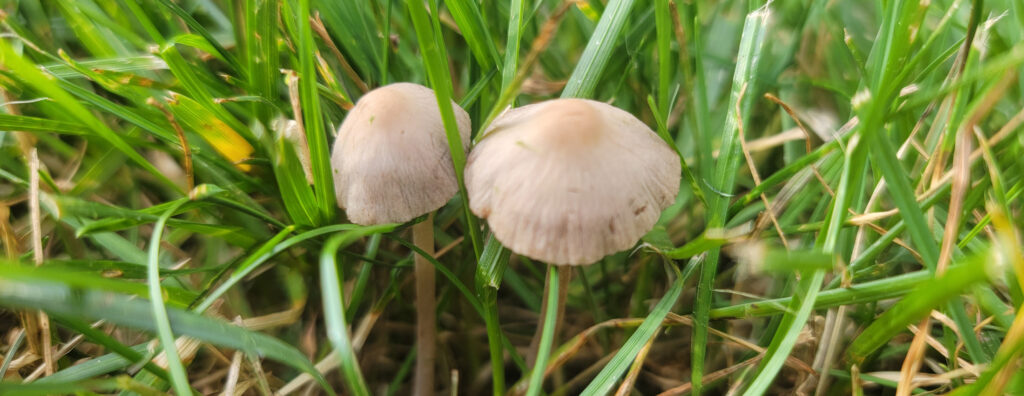
The future of construction materials may exist just inches below the surface of a typical lawn. In between the rocks and soil, a vast microfiber network is constantly assimilating wood chips along with plant waste. You may not see the network building, but you do see what it produces once mature – mushrooms.
“When temperature and humidity produce the right conditions, mushrooms grow out of the mycelium network that has existed beneath the ground,” says civil and environmental engineering Professor Zhao Qin.

Qin has been researching the structure of mycelium and the potential for it to be used in other adhesive applications. He sees it as an interface between material science, civil engineering and environmental engineering.
“It is like a glue that integrates wood chips and waste material and then assimilate all these pieces together,” says Qin. “Around cliff areas, people are looking to stabilize the soil. Mycelium is doing this all the time.”
Qin received a National Science Foundation (NSF) CAREER Award for his project, “Multiscale Mechanics of Mycelium for Lightweight, Strong and Sustainable Composites.” He seeks to reveal the fundamental principles that govern the multiscale mechanics of mycelium-based composites and integrate research into an educational program. Mycelium, produced during mushroom growth as the main body of fungi, plays an essential role in altering soil chemistry and mechanics, enabling a suitable living environment for different plant species.
He and his research team are building a computational model to show how mycelium blends wood chips and waste into complex microfiber structures.
“Once we have a computational model we can optimize the process,” says Qin. “We plan to generate the culture for Mycelium to grow in the lab. Then we generate conditions like temperature or pressure so we can characterize the strength of the material.”
Eventually, Qin wants to take these natural materials into the lab to see if it can be processed into a composite for infrastructure uses.
“A composite version of mycelium could require less energy to produce and be biocompatible,” says Qin. “It could be used for construction – think about similar properties to medium-density fiberboard but integrated by a mycelium network rather than an adhesive. We want to see what is possible once we know how the mycelium achieve these mechanical properties.”
Qin says Syracuse University is the perfect environment for his research. He will be collaborating with Professors Daekwon Park and Nina Sharifi from the School of Architecture. Their project was initially funded by a CUSE Grant.
“This is a fantastic research institution. My colleagues here in Engineering and Computer Science and the School of Architecture are very supportive, we have excellent facilities and outstanding graduate students,” says Qin. “Once we set the recipe for these materials, we can apply that to real world applications in construction and architecture.”
“Our department is thrilled to see Dr. Qin’s work recognized by the NSF,” says civil and environmental engineering department chair Andria Costello Staniec. “His work is significant for modeling of bioinspired materials and will contribute to the development of eco-friendly composite materials that have wide applications in civil engineering and beyond.”
As part of the NSF grant, Qin is involving K-12 students in research and also plans to develop an educational exhibit related to mycelium study at the Museum of Science and Technology in downtown Syracuse.
“We will design educational programs that will help aspiring young engineers and scientists to learn by playing,” says Qin.
“Dr. Qin’s research is an outstanding example of the kind of research that ECS seeks to grow,” said College of Engineering and Computer Science Dean J. Cole Smith. “He is showing how to leverage his foundational excellence in science and engineering to construct effective composite materials. Furthermore, he is engaged in deep collaborations with some of our truly fantastic colleagues in the School of Architecture. I am so personally excited to see Dr. Qin recognized for the promising and innovative researcher that he is.”
